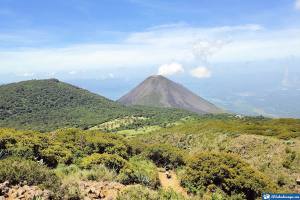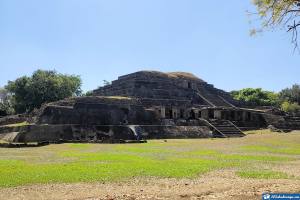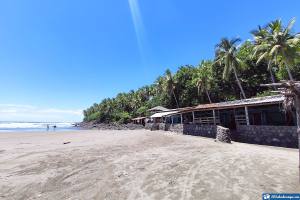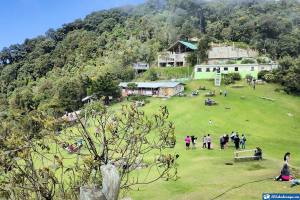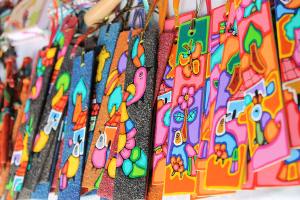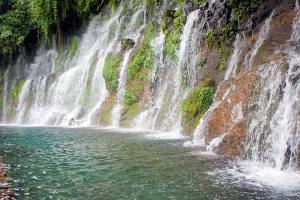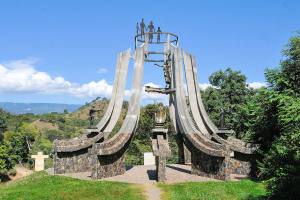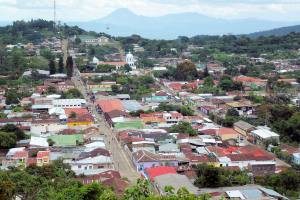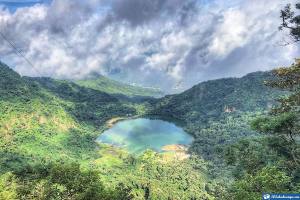El Salvador has become an international reference for tourism lovers looking for adventure, surrounded by nature, and even a spiritual experience. And it is precisely the Monsignor Romero Route, the tour that will make you know this country’s religious feelings.
It consists of 10 emblematic places that revolve around the archbishop’s life, which is part of the history of El Salvador in the 80s. On the other hand, the tour consists of 6 continuous hours in which you can visit the Monsignor Romero Center and the Martyrs Museum, as well as the Metropolitan Cathedral of San Salvador.
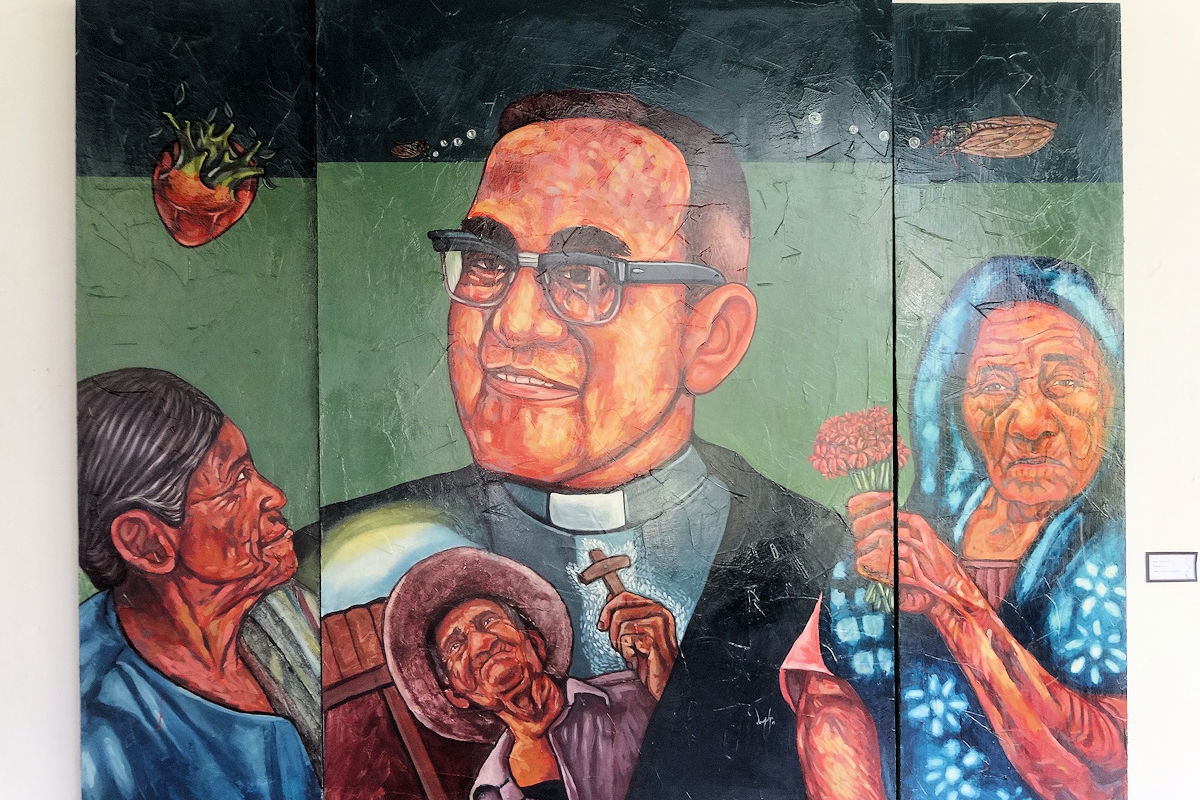
MONSIGNOR ROMERO ROUTE - Routes of El Salvador.Photo by John Donaghy. Flickr.
They are passed, of course, by the Museum of the Word and the Image, the Monsignor Romero Historical Center, and Hospital Divina Providencia. But also the National Museum of Anthropology, the National Palace, and the El Rosario Church.
To finish at the Basilica of the Sacred Heart of Jesus, the Paseo El Carmen, and the Sanctuary of Monsignor Romero of the Chacon Sisters. Without a doubt, the Monsignor Romero Route is a tour that will leave you wanting much more.
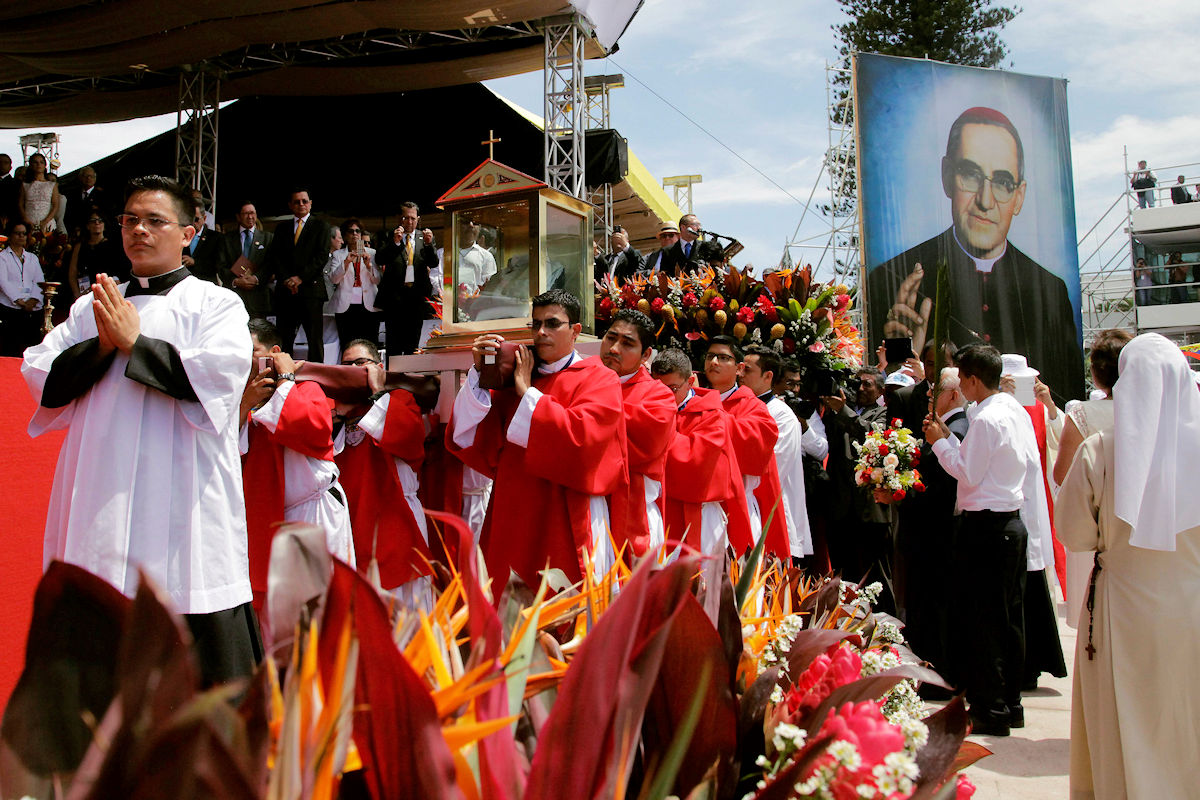
What to see and do on the Monsignor Romero Route
After knowing a little about Monsignor Romero, it is time to talk about the places that were a fundamental part of his life. However, the route also includes other areas created to commemorate his work and make known the legacy he left to the world.
Monsignor Romero Center and Martyrs’ Museum
This place houses the Monsignor Romero Association and several rooms with permanent exhibits on the life of Monsignor Romero. The space dedicated to the Father has a collection of photographs describing his life and trajectory as a priest.
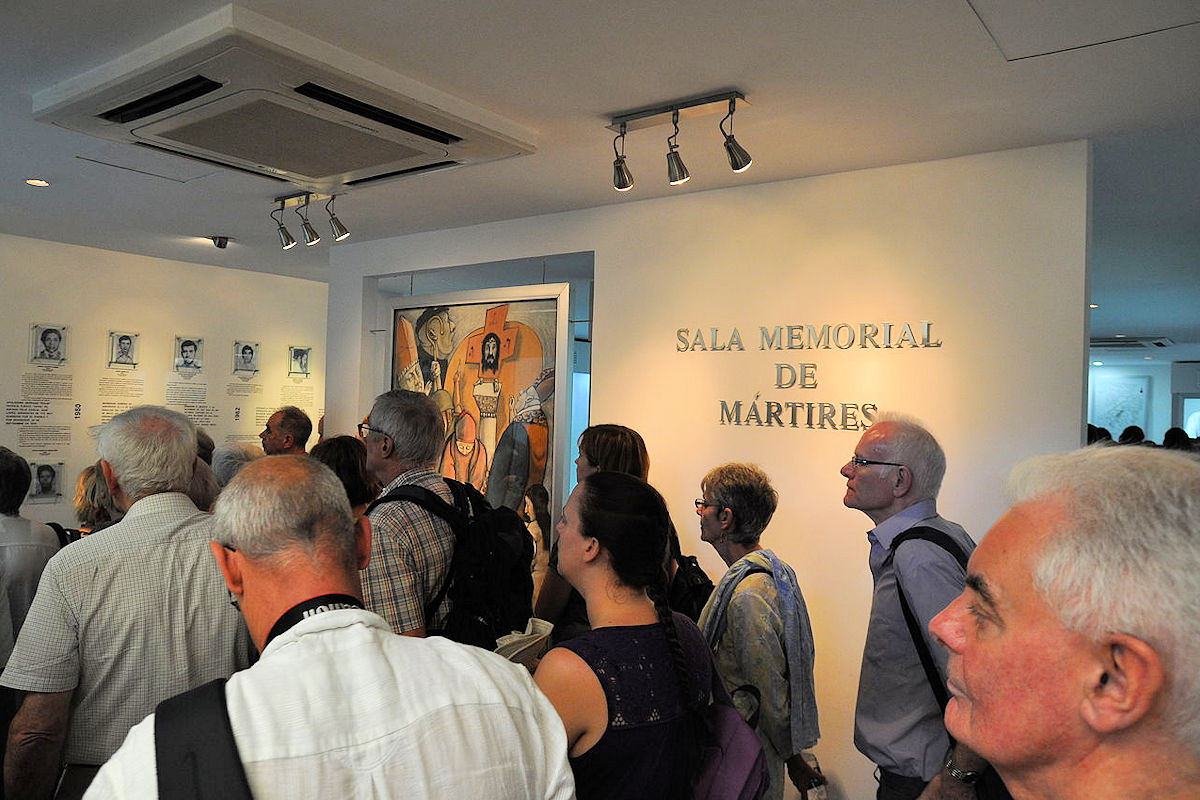
In addition, historical data on the events during the Civil War ended up taking his life. Inside the facilities, you can also find the Martyrs Hall, where you can find the names and history of 6 priests, among many others who, like San Romero, were executed for following their ideals.
San Salvador Metropolitan Cathedral
The Metropolitan Cathedral of San Salvador, whose official name is Metropolitan Cathedral of the Divine Savior of the World, was erected during the 19th century. At that time, it held the title of colony church of Santo Domingo.
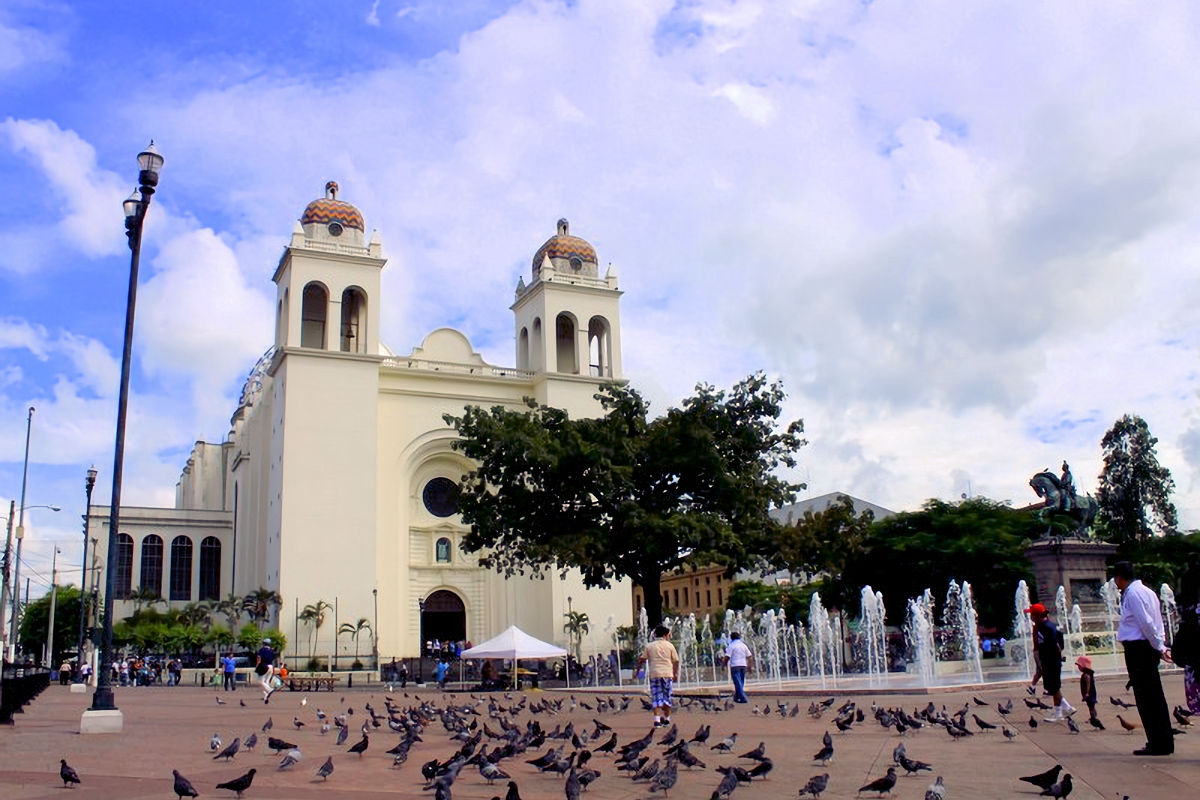
For decades it was a victim of natural catastrophes, but the fire of 1951 destroyed its foundations in its entirety. Archbishop Luis Chávez y González initiated the reconstruction of the church in 1956, and the work was completed years later by Archbishop Arturo Rivera y Damas.
Under the cathedral, in the crypt, are the remains of Monsignor Romero adorned by the figures of the four evangelists and apostles of Jesus. Here also rest the remains of lay people, bishops, and archbishops of El Salvador.
Museum of Word and Image
They create the Museum of the Word and the Image to commemorate the events during the civil war. Therefore, there is a permanent exhibition where you can learn about Monsignor Romero’s love for photography.

Here you can enjoy and learn in detail about his life, travels, and more. All in images taken by the father himself. In addition, there are rooms where you can find archaeological exhibits, period clothing, and the peace process history, among others.
It should note that many of these exhibitions are of itinerant type. Seasonally, they are taken to other places and cities of El Salvador so that everyone can enjoy the historical and cultural wealth of the country.
Monsignor Romero Historical Center – Divina Providencia Hospital
The Monsignor Romero Historical Center is nothing more than the house where the priest lived until his last days. It is located just a few steps from the Hospital Divina Providencia and is undoubtedly the best reference for his lifestyle.
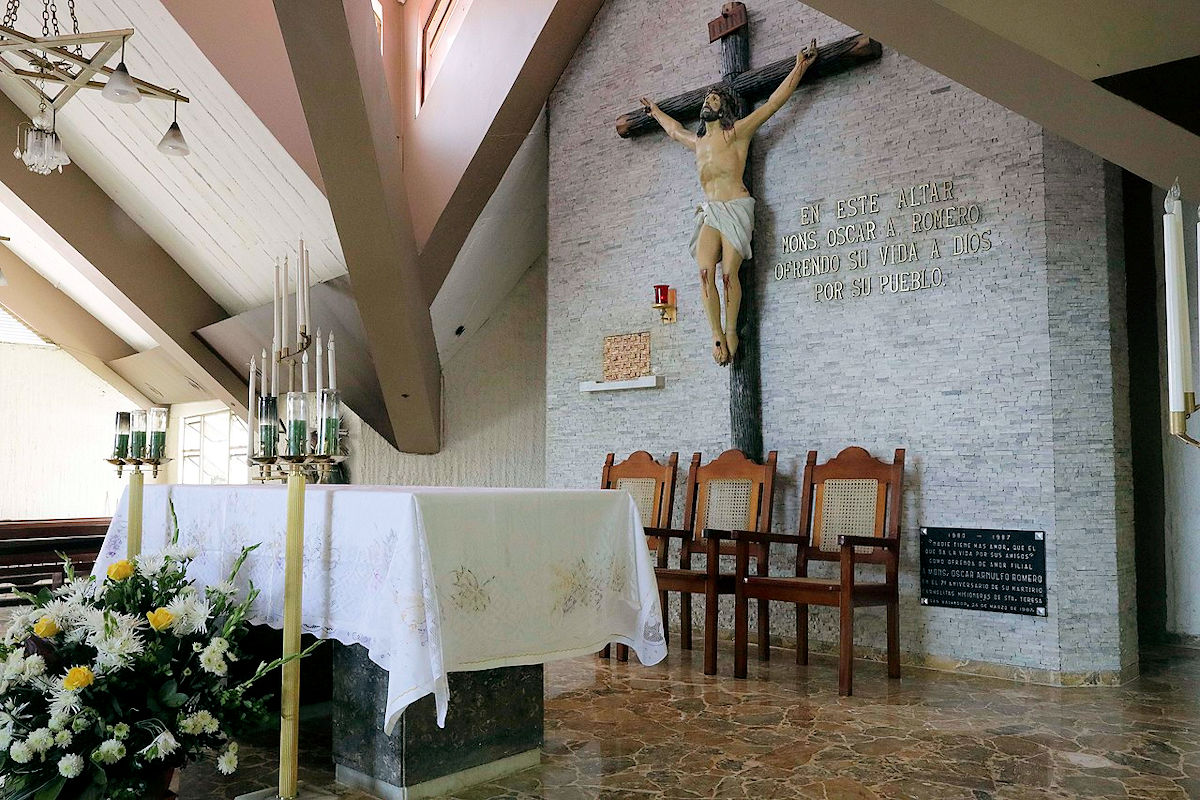
The sisters who take care of the place have kept everything just as Monsignor liked it, his room, living room, library, everything. On the other hand, you will see his car, books of hours, and clothing among some of the belongings. Especially a gray shirt is taken to the Vatican as a relic of his beatification.
National Museum of Anthropology
The National Museum of Anthropology allows you to travel back in time and learn more about the history and culture of the Salvadoran ancestors. Its various rooms clearly show what life was like in El Salvador from the pre-Hispanic era to the present day.
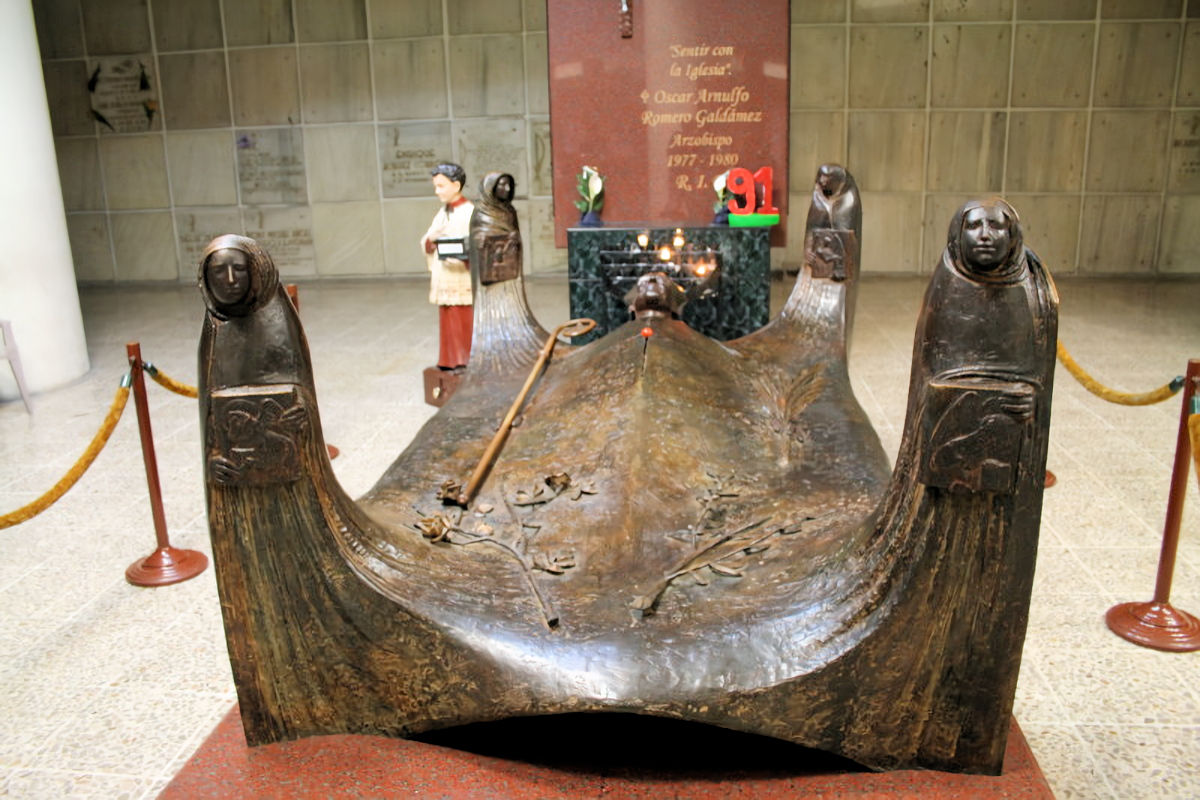
The tour begins in the introductory hall, followed by the Migration and Roots, Human Settlements, Agriculture, Craft Production, and Religion Hall. The latter has a permanent exhibition of all the religious customs of El Salvador.
There is also a collection of photographs in chronological order of each step, work, and life that embodied Monsignor Romero.
National Palace
The Monsignor Romero route also includes a visit to the National Palace, by far one of the most important buildings in El Salvador. The building was constructed between 1866 and 1870, and according to historians, it is the first one built in the country.
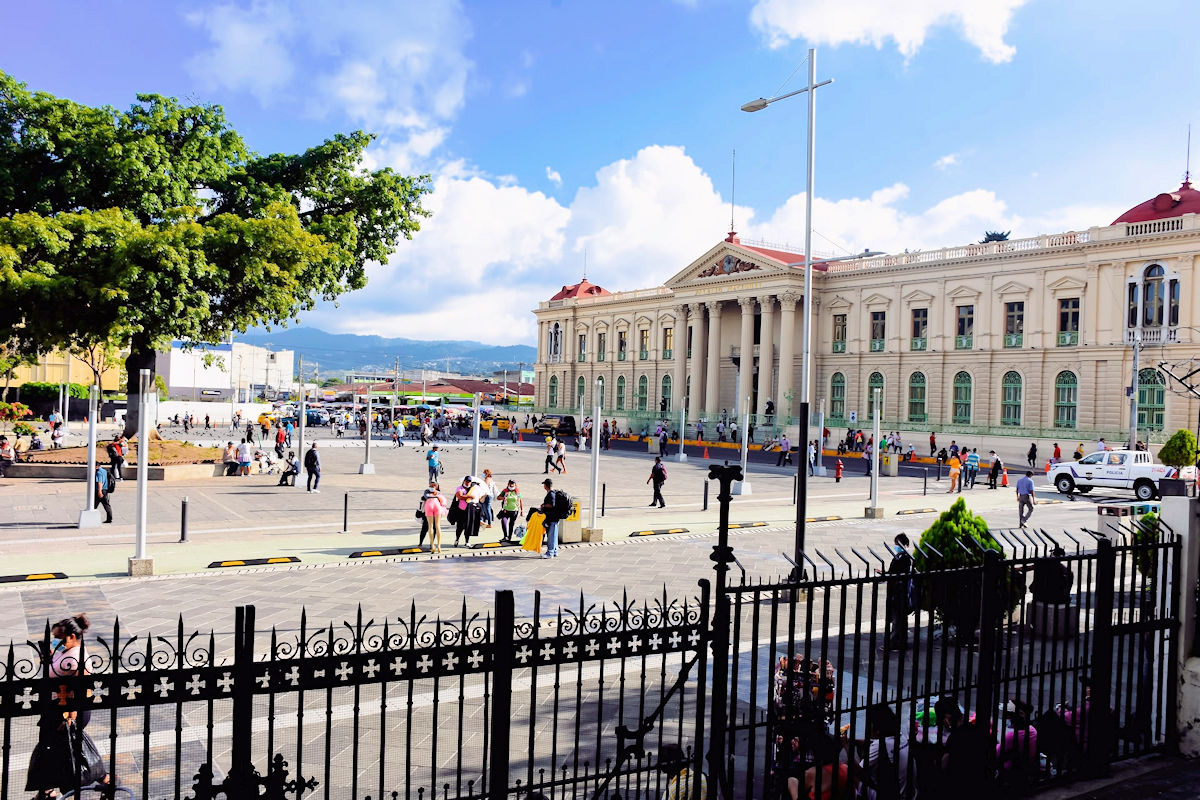
But in 1889, a fire destroyed the entire building, and in 1903 President Pedro José Escalón ordered a competition to rebuild the National Palace. It received 1980 the title of National Monument in 2008; remodeling works were carried out, allowing its opening to the public.
El Rosario Church
El Rosario Church is a living example of the before and after of Salvadoran architecture. It is part of the group of the last religious buildings built in the capital. In addition, its design and modernist style are not found in any other country in America.
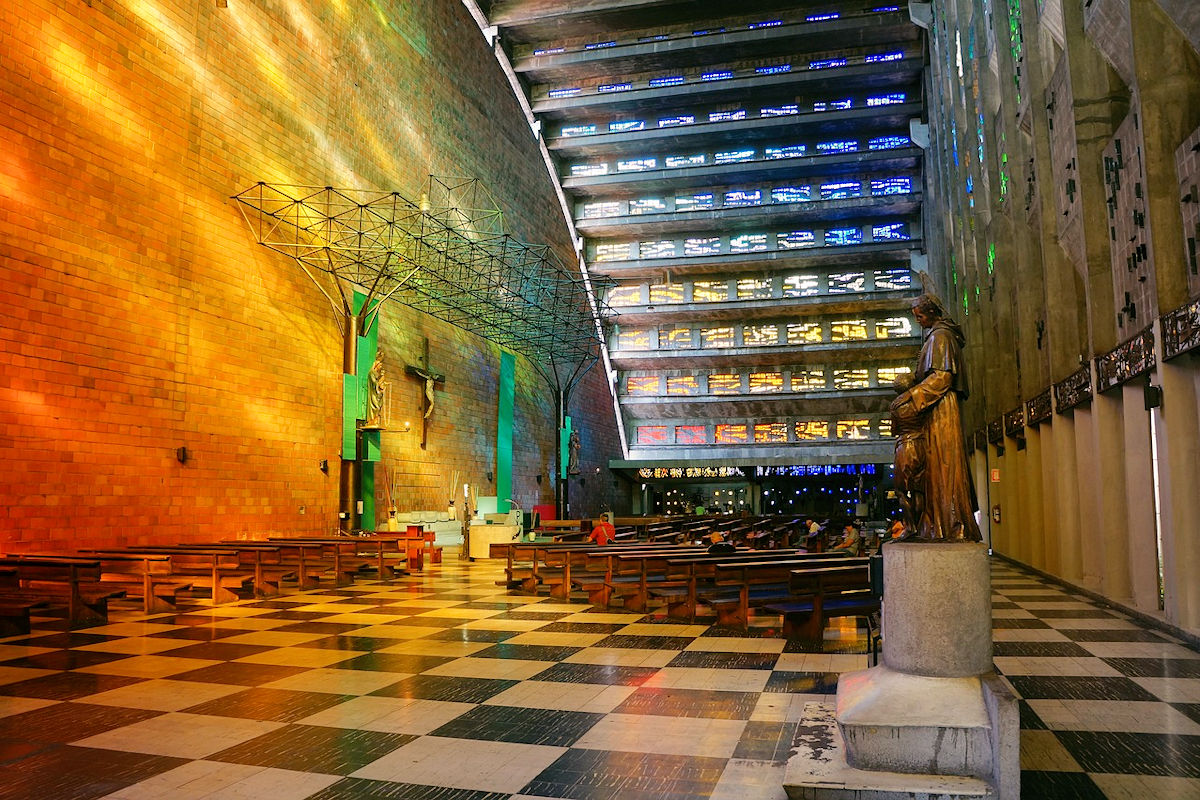
Historically, it dates from the XVIII century, and its construction was in charge of José Matías Delgado, who, although he was a priest, also became a hero of the independence. Unfortunately, a fire consumed it, and it was not until 1962 that the order to rebuild the temple was.
Finally, the titles that this church has received are Salvadoran Religious Monument, Cultural Property by the Hague, and Historic Site. And it is not for less because here lie the remains of some of the most important heroes of El Salvador.
Basilica of the Sacred Heart of Jesus
Also of great importance within the Monsignor Romero route is the Basilica of the Sacred Heart of Jesus, whose construction was approved in 1900. This temple has earned the recognition and the title of the symbolic place of great importance for El Salvador.
Unlike other churches, it has resisted the cruelties of nature. However, the earthquake of 1986 and 2001 made it necessary to carry out some remodeling.
An interesting fact about this temple is that it became the seat of the Archbishopric of San Salvador for a decade. The renovation of the Metropolitan Cathedral was between 1989 and 1999.
Paseo El Carmen
The Paseo El Carmen is the recommended place to take a break within the Monsignor Romero route. You can choose from various restaurants for lunch or dinner if you prefer.
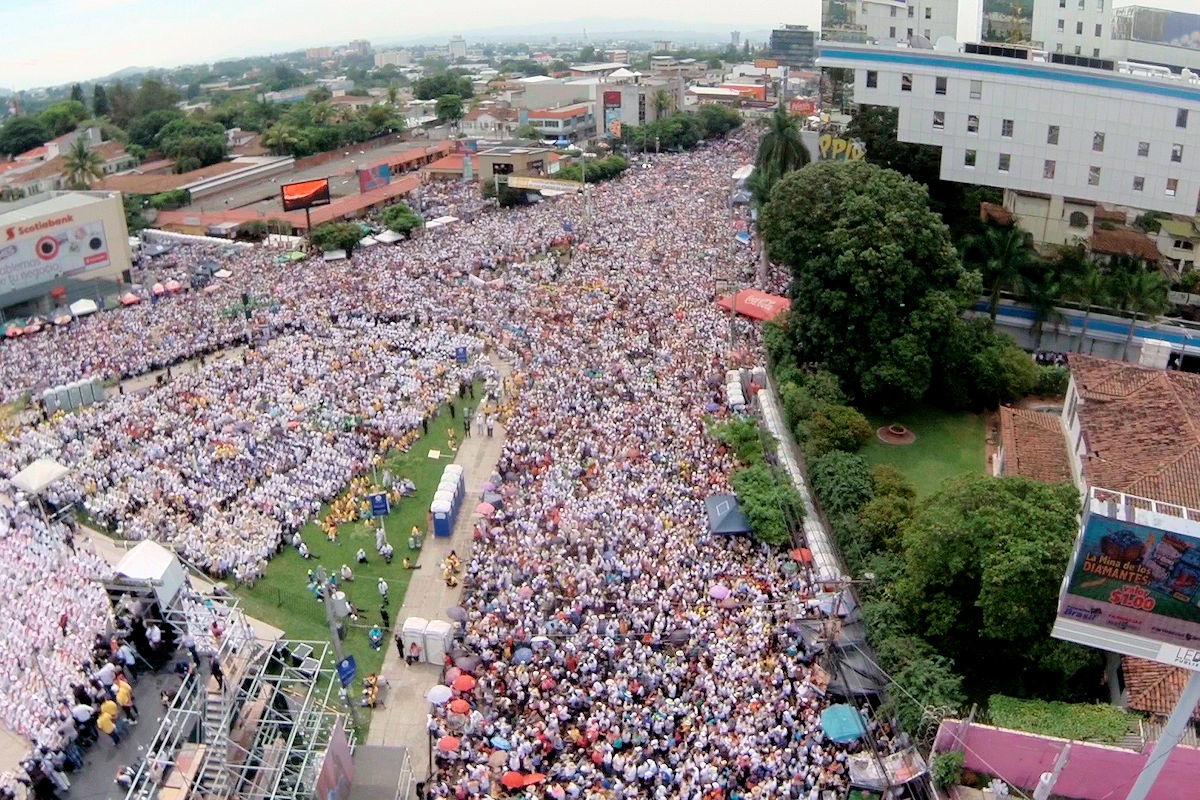
This place also allows you to enjoy a unique family atmosphere and live music, and if you still want to see something else in San Salvador, you can visit the El Carmen Church. Like many of the Salvadoran temples in a monument with great history dating from the eighteenth century.
Monsignor Romero Sanctuary of the Chacón Sisters
The last place to visit, and not less important, is the Sanctuary Monsignor Romero of the Chacón Sisters. A space created by Mrs. Leonor Chacón and her sister Elvira. Both were friends of Monsignor Romero for years and owners of Las Delicias de las Chacón.
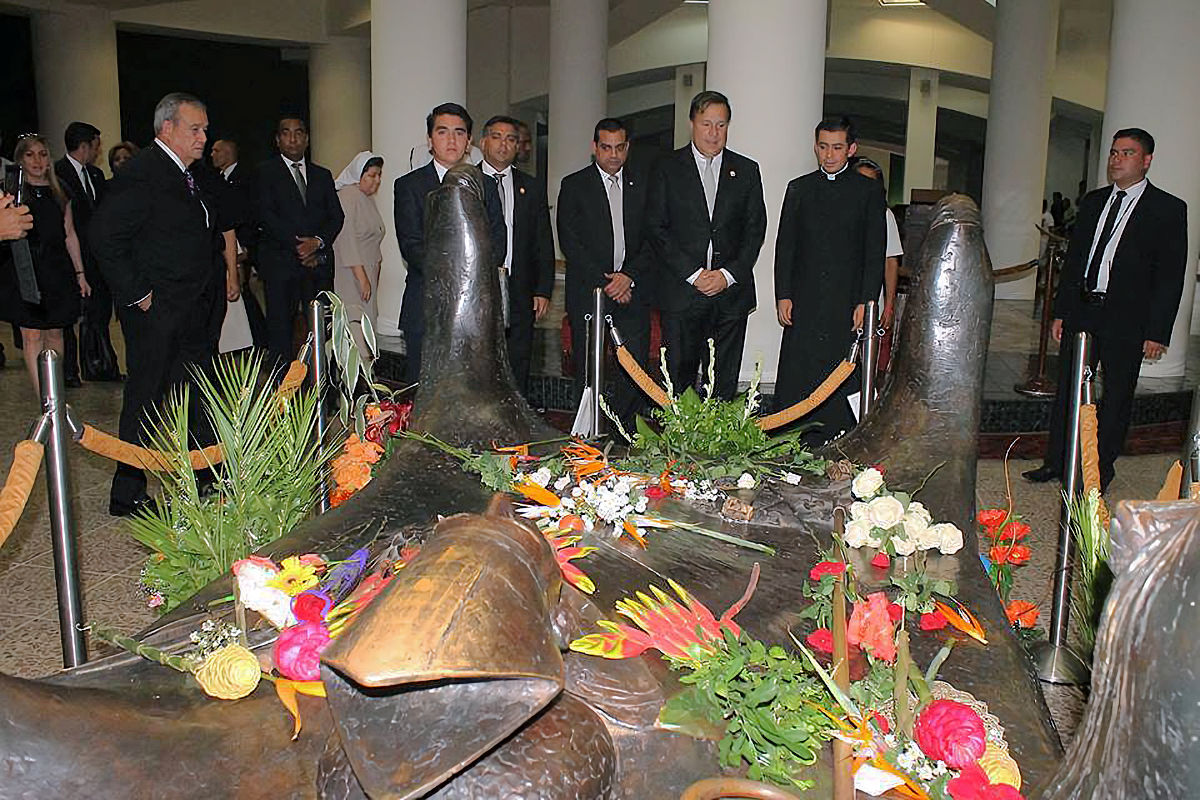
One of the dishes you can enjoy here are the Monsignor Romero beans, traditional drinks, and much more. But not only that awaits you because Mrs. Leonor has set up an area where she has placed a museum.
Here you will find on display letters of San Romero, photographs, posters, and even newspaper clippings related to the day of his death. The most exciting thing is that you can learn firsthand anecdotes, experiences, and above all, how this Salvadoran icon was in life.
Location and history of the Monsignor Romero Route
The Monsignor Romero Route takes place in the Department of San Salvador, with a route that covers the city of San Salvador, Antiguo Cuscatlán, and Santa Tecla. Therefore, it usually lasts approximately 6 hours, although if you prefer, you can distribute the route and do it in 12 hours.
This route has been created by the Ministry of Tourism of El Salvador to commemorate the life and work of Monsignor Romero. A priest dedicated to evangelizing his people through messages of peace emphasizing equality and truth in Christ.

Such has been the impact generated by this figure of God in the world that he is revered not only in El Salvador. He is an example of dedication and an icon of peace and union throughout the Americas and Europe.
On the other hand, his services as church pastor began on April 4, 1942, when he was ordained a priest. In the following years, he was appointed Pastor in a community in the Department of La Union, followed by the Cathedral of Our Lady of La Paz Department of San Miguel.
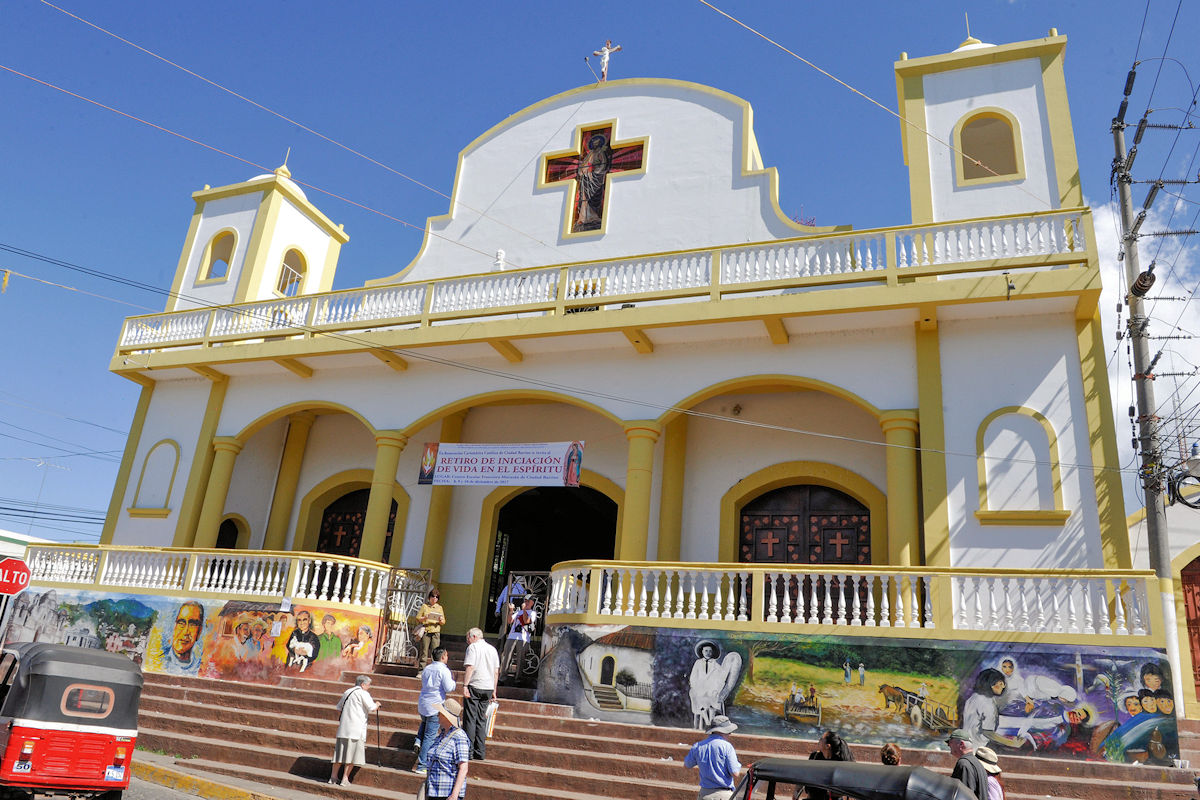
By 1968 he became secretary of the Episcopal Conference, and in 1970 he received his consecration by Pope John Paul II, becoming Auxiliary Bishop of San Salvador. After seeing the repression against the peasants, he decided to fight for human rights and advocate for peace and equality.
In 1977 he became archbishop of the capital. However, his inauguration did not impede to continue in the struggle in favor of the underprivileged. Their actions led him to receive the Doctor Honoris Causa at Georgetown University and the University of Louvain, as well as the Nobel Peace Prize.
Posthumous recognitions
Monsignor Romero died on March 24, 1980, while officiating a Eucharist at the Divine Providence Hospital. His legacy did not end there, as his followers took his message of peace to every corner of El Salvador.
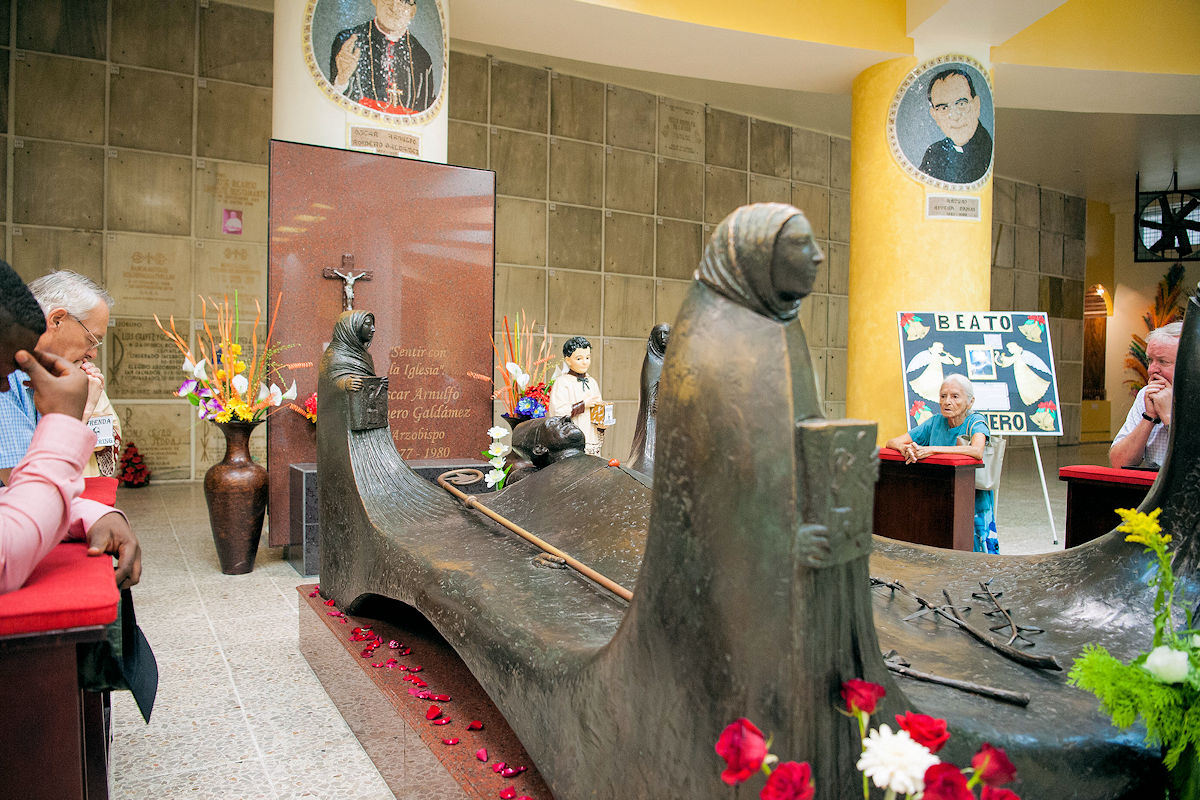
The Monsignor Romero Route was born on October 11, 2012, inspired by the beatification process ordered by the Vatican City. On May 23, 2015, Pope Francis named him Blessed.
Followed in the 2017 order of his canonization, which took place on October 14, 2018, after providing the miraculous healing of a patient with terminal cancer. Finally, the Vatican and the government of El Salvador have decreed March 24 as St. Romero’s Day after his sanctification.
Visiting Tips
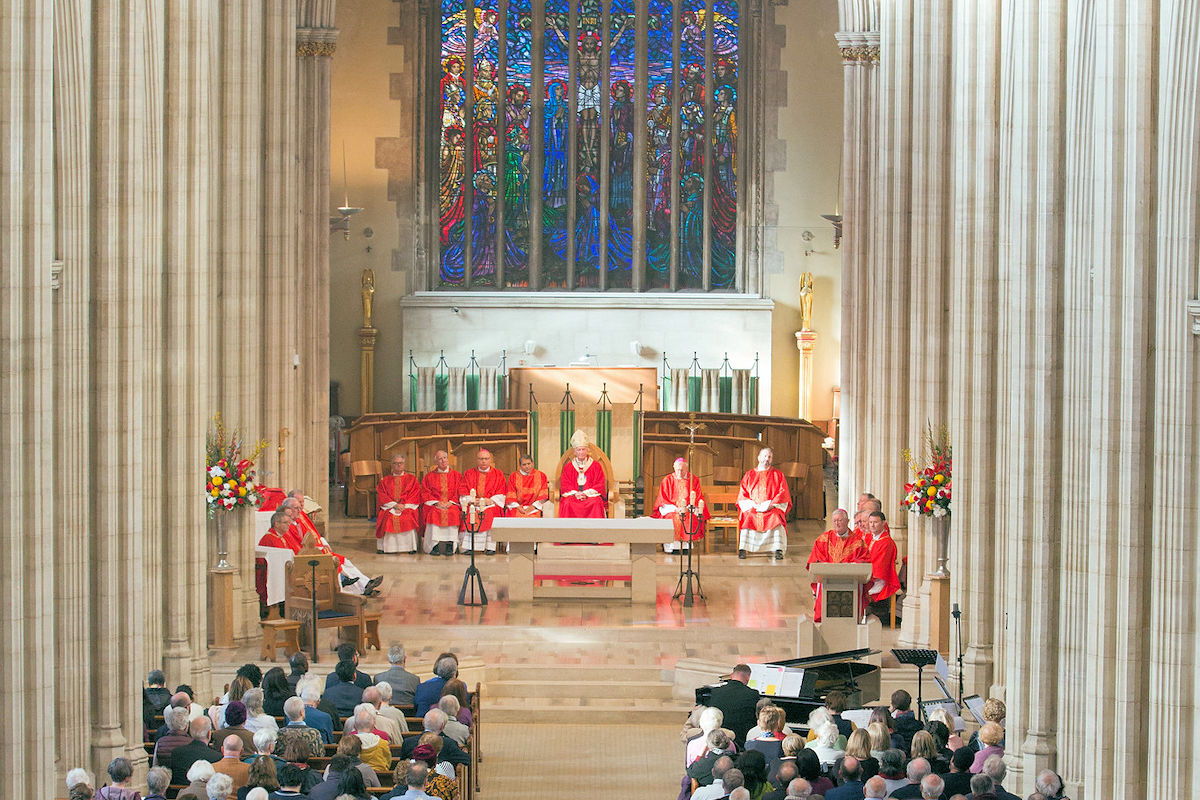
In short, the Monsignor Romero route is a tour full of spirituality in which you can also enjoy a family atmosphere in iconic places. However, it is essential to take into account some recommendations. For example:
- Bring plenty of water for the tour.
- Comfortable clothes and shoes.
- Wear sunglasses, a hat, and a cap. Of course, when entering the sacred precincts, avoid using them out of respect.
- The sites and monuments have no entrance fee; however, the visiting hours are from 8 am to 4 pm.
- Some sites close at noon, so dividing the tour into two parts is ideal. That is morning and afternoon.
- Bring money to cover your expenses and, if you like, buy some souvenirs and handicrafts during the visit.
Finally, bringing food for the Monsignor Romero route is unnecessary. Since it is a tour throughout San Salvador, you will find many restaurants along the way. All with a wide variety of national and international dishes at excellent prices.
